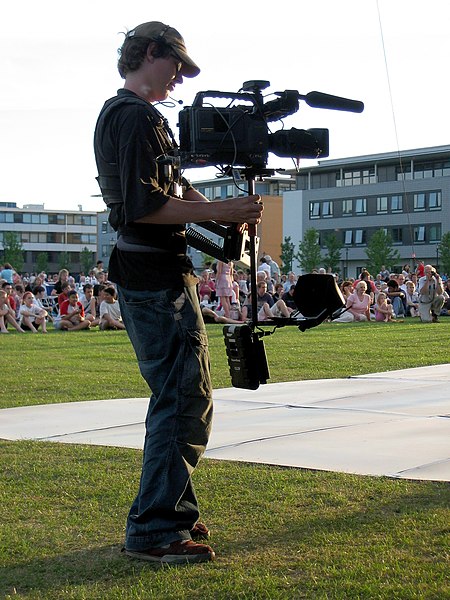Steadicam is a brand of camera stabilizer mounts for motion picture cameras invented by Garrett Brown and introduced in 1975 by Cinema Products Corporation. The Steadicam brand was acquired by Tiffen in 2000. It was designed to isolate the camera from the camera operator's movement, keeping the camera motion separate and controllable by a skilled operator.
A camera operator using the Steadicam in front of an audience.
The larger Steadicams are designed to support 35mm film cameras, digital cinema cameras, and IMAX cameras.
To film this recreated Victorian London street scene, the Steadicam operator is next to the lamp post, wearing a leather Steadicam vest.
In cinematography, a tracking shot is any shot where the camera follows backward, forward or moves alongside the subject being recorded. Mostly the camera’s position is parallel to the character, creating a sideway motion, tracking the character. Tracking shots differ in motion from dolly shots, where the camera follows behind or before the character resulting in either an inward or an outward movement. Often the camera is mounted on a camera dolly which rides on rails similar to a railroad track; in this case, the shot is referred to as a dolly shot. A handheld steadycam or gimbal may also be used for smaller scale productions. The camera is then pushed along the track while the scene is being filmed, or moved manually when using a handheld rig. The effect can be used to create a sense of movement, to follow a character or object, or a sense of immersion to draw the viewer into the action.
During filming of The Alamo, a tracking shot was used during a battle scene
Creating long steady tracking shots with a remote controlled film camera on a Newton stabilized head and a Flowcine Black arm.




